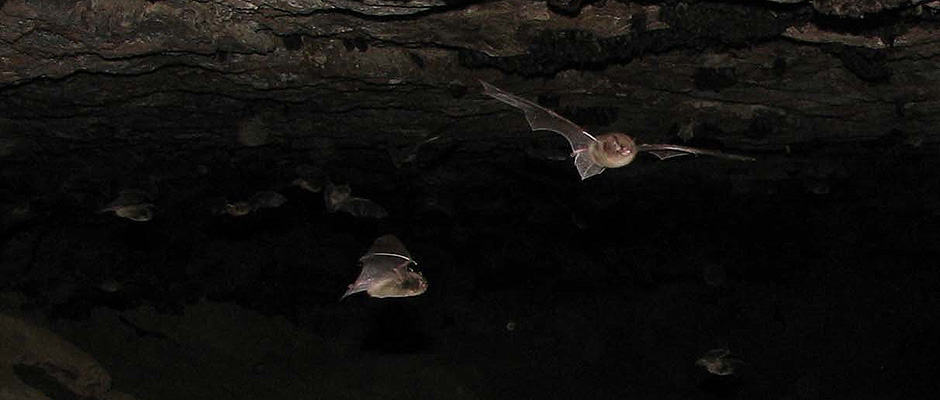Share this article
Collaborative Bat Monitoring Study Launched
The United States Forest Service recently published plans for a new program to monitor bat populations across North America and determine the effects of ongoing threats such as habitat loss, white-nose syndrome (WNS), climate change and wind energy development.
This program, the first of its kind, is referred to as the North American Bat Monitoring Program, or NABat and is a collaboration of the USFS, U.S. Fish and Wildlife Service, U.S. Department of Agriculture, Bureau of Land Management, U.S. Geological Survey and Bat Conservation International. Need for such a program became apparent when the FWS’ Conservation and Recovery Working Group was charged with developing plans to monitor which bat species are most susceptible to WNS. Prior to NABat, the majority of bat monitoring studies were short-term, conducted by individual states and focused on endangered species.
“A coordinated bat monitoring program has been needed for many decades but recent threats … accelerated this need, resulting in the creation of NABat,” said Susan Loeb, research ecologist for the USFS. “NABat will eventually produce periodic reports on changes in bat distributions and relative abundances that will provide natural resource managers with the information they need to manage bat populations effectively, detect early warning signs of population declines, and estimate extinction risk.”
As part of the effort, the five government agencies, along with Bat Conservation International and participants from seven universities developed sampling framework for the monitoring program at a series of conventions in 2013. NABat will rely on data collected at the state and local jurisdiction levels and compile that data to provide statistics and report on trends.
“Conservation and recovery of species requires understanding changes in distributions and relative abundances across the entire range of the species,” Loeb said, “Thus, effective monitoring efforts must be conducted at the international level to capture changes across the ranges of North American bats.”
Four methods will be used in this plan to monitor bat populations: winter hibernaculum counts, maternity colony counts, mobile acoustic surveys along transects and acoustic surveys at stationary points. Acoustic surveys pick up ultrasonic sounds produced by bats during foraging and commuting activities, which researchers can use to identify their species. Additionally, because bats do not usually fly faster than 20 mph, mobile acoustic surveys can provide estimates for relative abundance of bats in the area. This monitoring will require a dedicated staff, but relies heavily on volunteer participation and the general public to assist with acoustic surveys, hibernaculum and maternity counts.
“NABat will not necessarily be able to determine the exact cause of declines or increases (in population),” Loeb said, “However, using ancillary datasets, we will be able to pose hypotheses about the causes of decline that can then be tested in more focused research studies.”
NABat’s range of North America is home to 150 species of bats, a number of which are listed as endangered or threatened. Bats are the second most diverse group of mammals worldwide, and they have essential economic and ecological roles. It is estimated that bats save the U.S. agricultural industry between $3.7 and $53 billion each year in insect control. As threats to bats persist, the U.S. agricultural industry is likely to see losses in the next several years, according to the U.S. Geological Survey.
Some states have already begun monitoring bats, while other states will begin in 2016. Loeb says NABat researchers will start analyzing the data in the next one-two years, but it will be at least five years before enough data are available to look at trends and distributions of bat populations.
The U.S. Forest Service is a Premier Partner of The Wildlife Society.
Header Image:
The Indiana myotis (Myotis sodalis)is one of many endangered species of bats in North America. By collecting and analyzing data from across the continent, NABat hopes to be able to provide, state, federal, local, provincial and tribal resource management agencies with effective conservation measures for bats in decline.
Image Credit: USFWS








